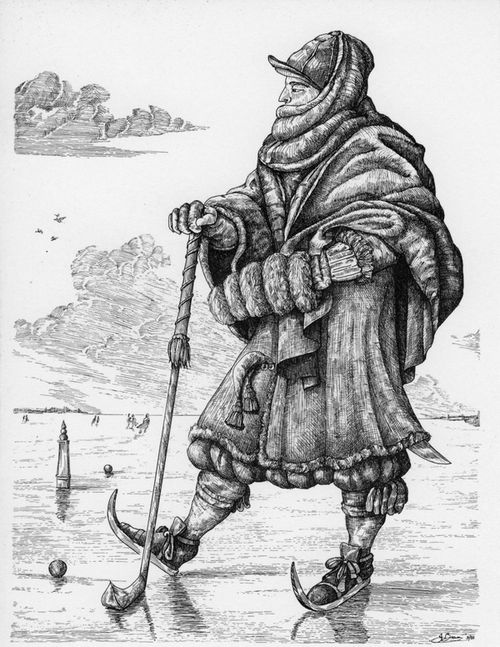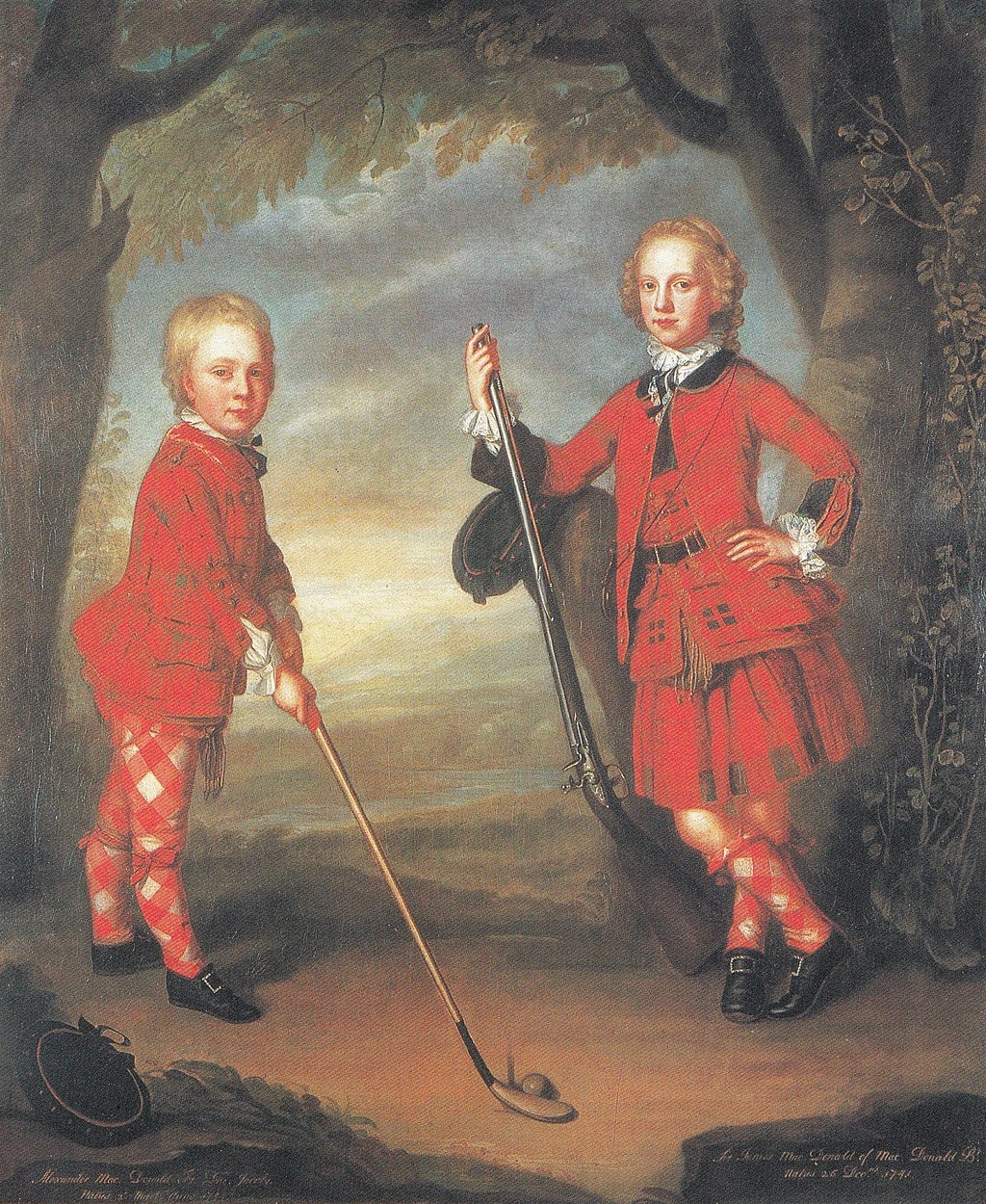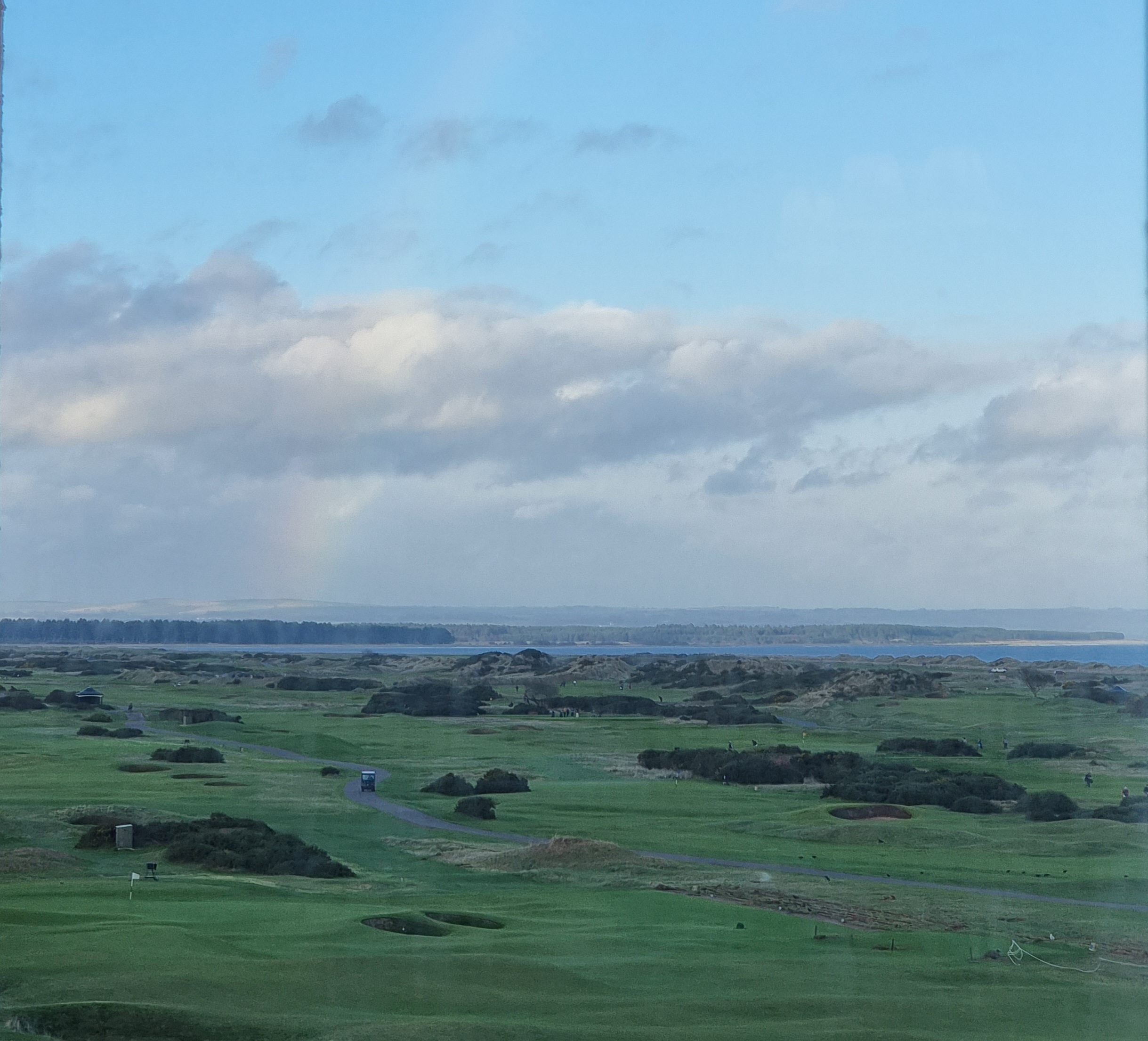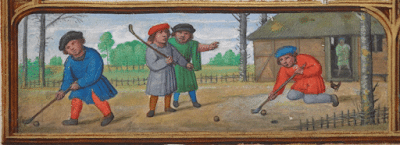Dutch Origins?
The earliest evidence of golf in the world dates back to the 13th century, when the Dutch played a game called “colf” or “kolf” with a stick and a ball on the streets or on the ice. The game was simple and fun, but also challenging and addictive.
The players had to hit the ball into a hole or a target, using as few strokes as possible. The game was also a way of socializing and competing with others.
The Dutch also introduced the game to America, as evidenced by a Dutch ordinance issued at Fort Orange (Albany) in 1659, banning the practice of playing colf along the streets.

Colfer on Ice. Circa 1700. A pen and ink drawing made by J. Brown after an engraving of Romeyn de Hooghe (1645-1708). Public domain.
Modern Golf a Scottish Invention
The modern game of golf played over 18 holes is generally considered to be a Scottish invention. The Scots played the game on the sandy and grassy terrain near the coast, and was played Scottish nobility and royalty, who adopted it as a leisure and sport activity.
King James IV of Scotland (1473-1513) was the first golfing monarch, who lifted the ban on golf that had been imposed by his predecessors to focus on military training. King James IV also patronized the first golf club in the world, the Company of Gentlemen Golfers, which was founded in 1744 in Leith, near Edinburgh. The club established the first rules of golf, which were later adopted and modified by other clubs and organizations.

The MacDonald boys playing golf 1740s. Public domain, via Wikimedia.
St Andrews, Scotland. The Home of Golf.
One of the most influential and prestigious golf clubs in the world is the Royal and Ancient Golf Club of St Andrews, which was founded in 1754 by a group of golfers who played on the links of St Andrews. The club became the authority on the rules and etiquette of golf, and also hosted many important tournaments and events. The club also contributed to the development and innovation of golf equipment, such as balls, clubs, and tees.
The links of St Andrews are considered to be the oldest and most iconic golf courses in the world, with a history and tradition that spans over six centuries. The courses are known for their natural and challenging features. The courses have hosted many major championships and events, such as the Open Championship, the Ryder Cup, and the Walker Cup.

The Links, Home of Gold, St Andrews. Copyright: iluvhistory.com.
From Then to Today
The modern game of golf spread from Scotland to the rest of the world, thanks to the Scottish diaspora. Scottish immigrants, soldiers, and traders introduced golf to other countries and regions, such as the United States, Canada, Australia, New Zealand, South Africa, and India. British colonizers and administrators also promoted golf as a way of civilizing and entertaining the local populations.
Today, golf is a global phenomenon, with more than 60 million players and 35,000 courses in over 200 countries. Golf is also a multi-billion dollar industry, with a huge impact on the economy, society, and environment. Golf is also a source of inspiration and enjoyment for many people, who appreciate its skill, strategy, and spirit.

